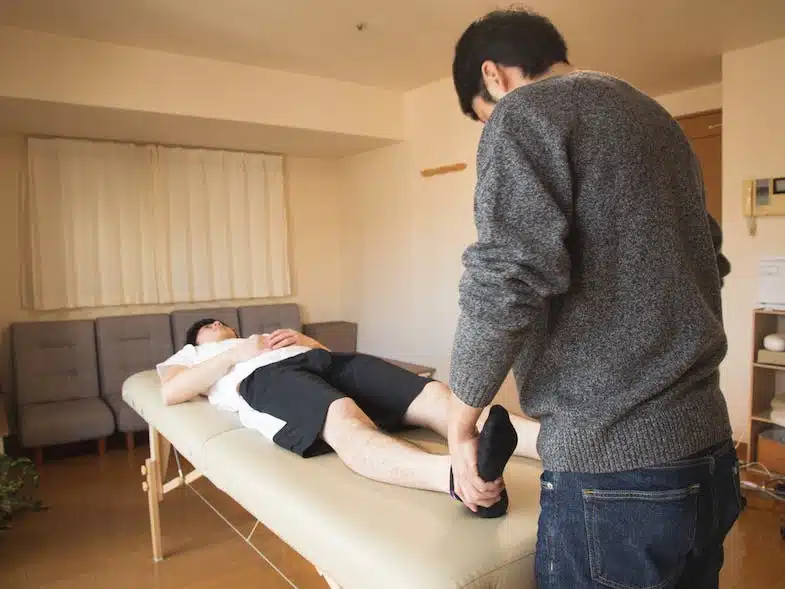If chronic pain or injury impairs moving through daily life, physical therapy facilitates restoring strength, mobility and independence. Yet that first appointment often breeds anxiety facing the unknown. This inside glimpse into typical physical therapy evaluation flow, key assessment areas and tips to optimize the encounter aims to build confidence prioritizing your health.
Understanding the Physical Therapy Evaluation Format
The physical therapy evaluation appointment establishes critical foundation aligning therapeutic interventions to your unique needs and abilities while building rapport with your provider.
A typical 60 to 90 minute initial physical therapy evaluation follows this basic sequence:
Introduction and History Gathering
- Discussing background, medical issues and current limitations
- Identifying patient goals and priorities
Movement System Screening
- Assessing baseline joint mobility and stability
- Analyzing gait, posture and coordination
Special Testing
- Isolating strength, range of motion and pain provocation
- Clarifying neurological and musculoskeletal involvement
Develop Initial Treatment Plan
- Recommending therapeutic interventions
- Providing home exercise program and self-care tips
Schedule Future Appointments
- Plotting short and long-term rehab course
This standardized template ensures thoroughly investigating dysfunction before designing customized, progressive treatment plans responsive to your evolving status over future encounters.
Collaborative History Gathering and Goal Setting
After introductions, the physical therapy evaluation commences with extensive verbal questioning to methodically unravel factors contributing to your current struggles.
Expect an interactive dialogue assessing your previous level of function and medical history:
- Background on the original injury or symptoms
- Severity, location and nature of your discomfort
- Aggravating positions or activities
- Pain patterns and relieving techniques utilized
- Treatments attempted previously without lasting success
- Medications, supplements, or assistive devices integrated
- Tests or imaging indicating involved structures
- Relevant past medical conditions possibly complicating recovery
- Impacts on daily function, independence and quality of life
This holistic perspective of your current baseline function empowers collaboratively defining realistic treatment priorities and incremental functional goals based on what matters most regaining day-to-day.
Initial Evaluation & Physical Assessment
Following thorough history gathering, assessing fundamental movement patterns provides objective quantifiable data revealing dysfunctional limitations in mobility, stability, coordination, muscle function or strength.
Common orthopedic screening tests executed by a therapist, during physical therapy evaluation, may analyze key foundational movement patterns such as:
- Stand to sit transfers
- Rising from sitting up to standing
- Stepping up/down curbs
- Squatting and lunging
- Balance maneuvers
- Alternating arm and leg sequences
- Reaching overhead or picking objects up
- Throwing balls
In a physical therapy evaluation, comparing left and right sides is helpful to pinpoint problematic regions while considering the overall quality of movement. Based on the history and initial findings from the physical therapy evaluation, your physical therapist customizes the most suitable tests. If you don’t know what to expect from a physical therapy appointment, this approach can reassure you.
Isolating Localized Strength and Mobility Impairment
After identifying dysfunctional movement patterns, subsequent manual testing isolates localized limitations compromising your foundation. Hand positioning quantifies available range of motion while applying precise pressures assesses joint, ligament and muscle integrity surrounding each joint.
Common assessments include:
- Quantifying spinal segment mobility restrictions
- Shoulder, elbow, wrist and hand mobility
- Hip internal/external rotation
- Knee ligament stability
- Ankle flexibility
Particular manual neurological tests help distinguish joint abnormalities from strength deficits or nerve-based numbness into a hand or foot.
Clarifying the root causes and interactions allows customized, progressive selection of manual techniques, targeted stretching and therapeutic exercises.
Specialized Testing for Specific Conditions
Beyond foundational movement analysis, validating involvement of particular structures often requires specific assessments like:
- Quantifying hand grip or pinch strength
- Assessing electrical conductance in nerves
- Evaluating torn rotator cuff or ACL laxity
- Confirming carpal tunnel or spinal disc herniations
- A pt evaluation can help identify hip, pelvic, or sacroiliac dysfunction.
Specialized training and clinical experience facilitates recognizing subtle contributing factors easy to miss for novice practitioners. This detailed testing data informs treatment planning and determines appropriate referrals to collaborating physicians or specialists.
Designing an Individualized Plan of Care
After quantifying the anatomical dysfunction and correlating clinical findings to your symptom descriptions, the physical therapist synthesizes examination details into a customized therapeutic plan.
Initial treatment plans identify:
- Specific tissues and joints requiring intervention
- Baseline impairments and movement limitations established
- Functional mobility goals and incremental progressions
- Manual techniques, stretches and exercises indicated
- Appropriate referrals to other providers
- Self-care education priorities
- Realistic reevaluation endpoints assessing efficacy
Collaboratively determining optimal interventions responsive to your distinct situation, needs and abilities ensures maximal results through consistency applying home programs between appointments.
Demystifying the Physical Therapy Evaluation
If lingering pain or injury limits daily life activities, scheduling a phisical therapy evaluation removes mystery surrounding the therapeutic process. Understanding the clinical reasoning and typical sequence of assessments facilitates engaging actively in your care, where the physical therapist will perform a physical assessment including the evaluation of muscle function.
While each practitioner emphasizes unique skillsets based on background and preferences, all physical therapists utilize established evaluation frameworks endorsed through professional training standards and certifications. This consistency ensures optimal clinical practice applying current medical knowledge while considering patient values and functional goals.
Remember – no one understands your symptoms and abilities better than you. Communicating priorities while asking thoughtful questions builds rapport and confidence pursuing health. Let your provider know what matters most regaining day-to-day.
Then utilize their expertise designing customized treatment strategies leveraging your innate healing capacity through education, hands-on care and empowering exercise programs. With consistent participation focusing interventions on root dysfunction rather than just symptomatic relief, physical therapy fosters maximizing movement potential regardless of age, injury or condition.
Preparing for Your First Physical Therapy Evaluation
Walking into a clinic for that initial phisycal therapy evaluation appointment with your physical therapist can feel intimidating due to the uncertainty about muscle function assessment. Arriving aware of what to expect and needs to share optimizes quickly building collaborative rapport with your physical therapist.
Before the Visit – Gather the following details:
- Symptom history and suspected cause
- Medical reports and imaging related to condition
- Medications or supplements taken currently
- Provider names managing current care
- Specifics of health insurance coverage for pt services
This concrete background evidence helps your therapist interpret examination findings in proper context while ensuring coordinate communication looping in other practitioners.
During the Physical Therapy Evaluation – Openly communicate:
- Primary symptoms bothering you most
- Positions/activities aggravating or easing discomfort
- Treatments attempted previously without success
- Questions you need answered before starting care
- Personal goals and priorities hoping physical therapy will address
Directly expressing what daily limitations bother you most and what optimal improvement would entail focuses treatment planning around measurable functional gains that truly matter for your life and needs specifically.
After the Physical Therapy Evaluation – Be sure to understand how your physical therapist will work on your muscle function.
- Clinical impressions summarizing suspected dysfunctional tissues or joints
- Contributing factors potentially driving the dysfunction
- Specific treatment strategies selected and why
- Home program exercises or self-care advice provided
- Realistic expectations for improvement timeline
- Follow up communication and reassessment plans
Ask clarifying questions until you feel confident starting the therapeutic regimen independently between appointments. The physical therapist may recommend wearing comfortable attire for these sessions. Consistency and carryover prove vital achieving and maintaining maximal results.



